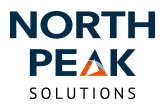Becoming Mighty: What Small Teams Stand to Gain with Salesforce

If you’ve worked on or with small teams considering Salesforce, you’ve probably heard a warning along the lines of, “yeah it’s free… like a puppy.” Salesforce, and any CRM, requires investment to customize, maintain, and become good at. Over the last decade(ish), North Peak has advised many small orgs trying to determine whether the work and resources it takes to successfully adopt Salesforce are worth it.
The short answer is yes, we think it’s worth it. Teams of any size can be great at CRM. With a clear vision for the system, a right-sized solution*, and a commitment to using it well, CRM can be a game-changing asset. But of course it’s more complicated than that– here’s why.
*We should note: We’re defining “small” as orgs with revenues in the sub-$1M to 3M range. For small orgs with limited in-house technical expertise, designing a right-sized, high-quality CRM likely requires the advice, technical skills, and training of an outside expert.
Why we think CRM is a good investment for small orgs
These days, it’s table stakes for organizations to have strong technology powering their operations so they can work smarter and faster. But let’s get specific about how a CRM makes orgs smarter and faster: implementing a single-source-of-truth system forces a reckoning on how teams work and share information. Do you have multiple program staff who each have their own unique approach to recruiting participants? Time to decide on some standards. Are Marketing and Development each keeping data in separate systems that could help the other team communicate with supporters more effectively? Time to get coordinated.
This reckoning can yield huge benefits:
- Reclaim time that staff used to spend updating spreadsheets or multiple systems
- Provide analytics that staff used to have to manually compile, and check, and double-check (if they could get the data at all)
- Create standards for process to ensure teams are working as efficiently as possible
- Build infrastructure to support institutional knowledge, which boosts resilience as organizations change
- Enable more collaboration within and across teams to increase the value of their work
All of these benefits help organizations increase their impact. For example: We have seen a team of 2 create a membership and grants management system that took them off spreadsheets and gave them visibility into information that they can use to better tailor member communications. We’ve worked with a $1M organization that moved to Salesforce from siloed systems, which enabled them to consolidate donor data and grow online fundraising by 13% and overall fundraising by more than 50%.
Some will argue small teams won’t reap enough value from CRM compared to the effort and resources they spend standing up a system. Or that these teams won’t be able to sustain the system and its value will diminish over time. But failure is far from inevitable. Let’s get into what small teams can do to set themselves up for success.
How small teams can maximize their success with CRM
Make it part of the org culture
Every person at the organization needs to understand why the CRM is important for the org’s success and how they’re expected to use it. This starts with leadership. Leadership needs to answer these questions and share the message with the team, starting well before the CRM project begins and for the entire lifespan of the system.
When the CRM is in place, leaders need to encourage accountability and reinforce the org’s commitment to this new way of working. That can be as straightforward as asking for reports and other data from Salesforce consistently. And nothing compares to executives leading by example in actually using the database.
Consider starting small and building over time
The cost and change management required to bring all teams into one system at once can be a lot to take on. Consider starting with one or two business areas and expanding to others later and/or building a lean solution to start. This might look like designing a solution for programs to capture essential program data, but waiting to integrate with online forms for participant sign ups.
Your CRM will never really be “completed”– just like your team and your operations, it’ll evolve over time. Thinking practically about what technology is sufficient and necessary in a defined time period (for example, over the next 12-18 months) allows the system to adapt with you. And it means you have time to build up your team’s capacity to manage it–more on that below.
Assemble a well-rounded project team
Salesforce implementation partners like North Peak can provide the strategic guidance, technical expertise, training for users and system administrators, and project management for your project. If a full-service approach isn’t feasible for your budget, volunteers can be great resources. We’ve had small clients lean on volunteers to help with data cleaning, for example. And Salesforce offers a pro bono program for up to 20 hours of support.
No matter how you staff your project team, your internal team needs to take on these roles in the project:
- Executive stakeholder— We wrote about key responsibilities here. The gist: they define the vision, build buy-in across the org, weigh in on big decisions, and help manage risks.
- Subject matter experts— These are staff who know the ins and outs of the workflows your system will support. They need to share their knowledge with the person who’s translating process into technology.
Make a plan to manage the system long-term
It’s one thing to build a CRM, it’s entirely another to manage it over time. Processes and teams will change, and your organization will need different things from your system. Even with minimal internal change, users will need training and support. And they’ll have ideas for improvements as they better understand their data and what the system can do.
Teams can approach this a few ways: 1) do it in-house; 2) outsource it; 3) some combination of the two. Here’s what to consider for each path.
If You're Going In-House
- How much time will the system administrator be able to dedicate to this work? Considering your aspirations for the system, is that enough time? To very roughly estimate, small orgs’ admins might need to spend an average of 20-30% of their time on the system (assuming some weeks it’s just a couple hours and others, like during fundraising drives or peak program, it spikes).*
- Be realistic about the technical skills they need. If you have multiple integrated systems for online donations, marketing, online forms, etc, you will need the admin to learn those systems too, so they can make updates and troubleshoot issues. Is that feasible? If not, who else can “own” those systems? And do you really need that technology now, or could you wait till you have more resources to manage it?
If You're Outsourcing
- An internal staff person needs to manage this resource, liaise between the system administrator and internal staff, and provide context around teams’ goals and how people work.
- Budget both for time spent on any projects you’re planning as well as general support for routine system maintenance and unexpected updates.
- The AppExchange has listings for firms that provide outsourced admin services and the Power of Us Hub can be a great place to ask for recommendations for independent consultants.
If You’re Combining These
- Set clear expectations for the responsibilities of the in-house resource vs. the outsourced resource. The best way to clarify this is to create a roadmap of your system needs: make a list of all the stuff that must be done and stuff users would like to do, whether that’s next quarter or next year. Seriously– document it all. Then systematically prioritize the work and decide what you can tackle in house and when, and what you’ll need help with.
*Note: Orgs relying on an in-house administrator with limited technical skills will likely need to plan to invest in some external resource every couple years or so to do more thorough maintenance, tackle substantial changes, and possibly help ease the transition of the former expert who’s advanced to a new role or moved on from the org.
Tell Us What You Think
Let us know what you think about this topic. It’s a tricky one! Reach out to us here with thoughts and to learn more about our experience with small nonprofits.

About North Peak
North Peak helps nonprofits and foundations increase institutional intelligence through healthy CRM (constituent relationship management) and/or GMS (grant management system) systems and practices. Contact Us to learn how we can elevate your organization's impact.
